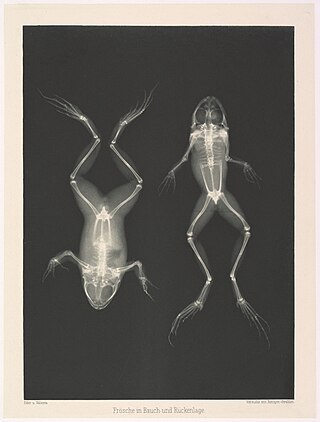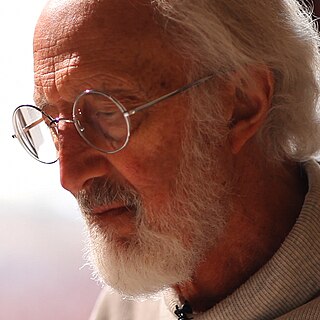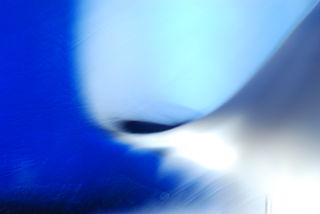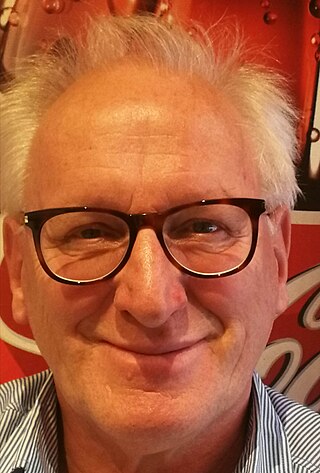
Photography is the art, application, and practice of creating images by recording light, either electronically by means of an image sensor, or chemically by means of a light-sensitive material such as photographic film. It is employed in many fields of science, manufacturing, and business, as well as its more direct uses for art, film and video production, recreational purposes, hobby, and mass communication. A person who captures or takes photographs is called a photographer.
The following list comprises significant milestones in the development of photography technology.

A darkroom is used to process photographic film, make prints and carry out other associated tasks. It is a room that can be made completely dark to allow the processing of light-sensitive photographic materials, including film and photographic paper. Various equipment is used in the darkroom, including an enlarger, baths containing chemicals, and running water.

The Sabatier effect, also known as pseudo-solarization and erroneously referred to as the Sabattier effect, is a phenomenon in photography in which the image recorded on a negative or on a photographic print is wholly or partially reversed in tone. Dark areas appear light or light areas appear dark. Solarization and pseudo-solarization are quite distinct effects. Over time, the "pseudo" has been dropped in many photographic darkroom circles and discussions, but the effect that is meant is the Sabattier effect and not the solarization by extreme overexposure.

A photogram is a photographic image made without a camera by placing objects directly onto the surface of a light-sensitive material such as photographic paper and then exposing it to light.

Fine-art photography is photography created in line with the vision of the photographer as artist, using photography as a medium for creative expression. The goal of fine-art photography is to express an idea, a message, or an emotion. This stands in contrast to representational photography, such as photojournalism, which provides a documentary visual account of specific subjects and events, literally representing objective reality rather than the subjective intent of the photographer; and commercial photography, the primary focus of which is to advertise products or services.
The following outline is provided as an overview of and topical guide to photography:
A luminogram is an image, usually made with an artistic purpose, created by exposure of photosensitive materials to light without the intervention of an object.

Josef Maria Eder was an Austrian chemist who specialized in the chemistry of photography, and who wrote a comprehensive early history of the technical development of chemical photography.

Emanuel Goldberg was an Israeli physicist and inventor. He was born in Moscow and moved first to Germany and later to Israel. He described himself as "a chemist by learning, physicist by calling, and a mechanic by birth." He contributed a wide range of theoretic and practical advances relating to light and media and was the founding head of Zeiss Ikon, the famous photographic products company in Dresden, Germany. His inventions include microdots, the Kinamo movie camera, the Contax 35 mm camera, a very early search engine, and equipment for sensitometry.
Harald Mante is a German photographer, artist, and designer. Since 1960 Mante had a great influence on the German color photography. He was in second generation a Bauhaus student and transformed the ideas of the famous masters of the Bauhaus into photography. His text books on composition and color design are known worldwide.

Pierre Cordier was a Belgian artist. He is considered a pioneer of the chemigram and of its development as a means of artistic expression.

André Villers was a French photographer and artist "best known for his pictures of Pablo Picasso in the south of France in the 1950s."

Abstract photography, sometimes called non-objective, experimental or conceptual photography, is a means of depicting a visual image that does not have an immediate association with the object world and that has been created through the use of photographic equipment, processes or materials. An abstract photograph may isolate a fragment of a natural scene to remove its inherent context from the viewer, it may be purposely staged to create a seemingly unreal appearance from real objects, or it may involve the use of color, light, shadow, texture, shape and/or form to convey a feeling, sensation or impression. The image may be produced using traditional photographic equipment like a camera, darkroom or computer, or it may be created without using a camera by directly manipulating film, paper or other photographic media, including digital presentations.

A chemogram is an experimental art where a photographic image is partly or fully enlarged and processed onto photographic paper in the darkroom and afterwards selectively painted over in full light with chemicals used in photographic processing. Due to the production process chemograms can be considered works of abstract photography.

Josef H. Neumann is a German Art Photographer, media designer and art historian. He invented the chemogram, an experimental artform involving manipulating chemicals in film photography.

The German Society for Photography is a German photography organisation, based in Cologne. It is concerned with the application of photography in art, science, education, journalism, economics and politics in cultural contexts.
Gottfried Jäger is a German photographer, photo-theorist and former university teacher.
Floris Michael Neusüss was a German photographer.
Anna Koppitz was a mid-century Austrian photographer.















